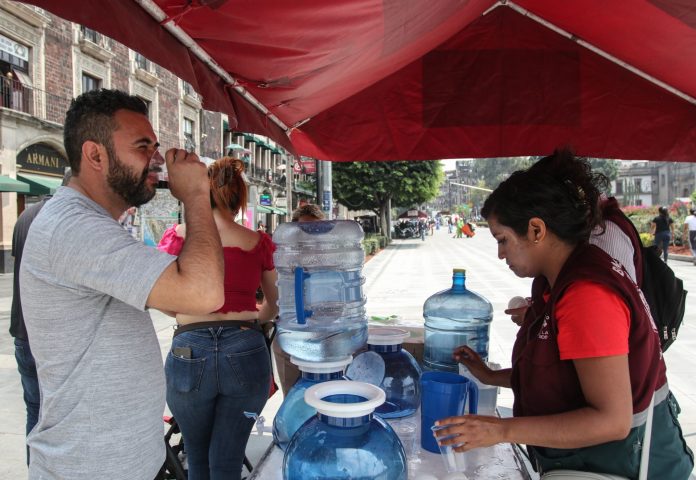Mexico is about to experience record high temperatures, according to climate scientists at the National Autonomous University of Mexico (UNAM), as the third of a projected five heat waves scorches the country.
The unwelcome news comes less than two weeks after new high-temperature records were set across the country.

Scientists at the National Autonomous University of Mexico (UNAM) said Wednesday that over the next 10–15 days, Mexico can expect to see the highest temperatures ever recorded in its history.
Calling Mexico’s heat wave situation “unprecedented,” three UNAM professors called on authorities to take all steps necessary to prepare for the extreme heat so as to protect the lives of both humans and animals.
“The consequences are not necessarily related to how hot it gets,” said Jorge Zavala Hidalgo, director of UNAM’s Institute of Atmospheric Sciences and Climate Change (ICAyCC), “but to how well prepared a community is to respond to the situation.”
The central part of the country and urban areas will feel the greatest impact, Zavala said, identifying Tlaxcala, Pachuca and Cuernavaca as cities where new records will be set.
Additionally, the extreme heat will cause ozone levels to increase, further complicating the life of city dwellers. As if on cue, the Environmental Commission of the Megalopolis (CAMe) declared a Phase 1 air-quality emergency for Thursday in the Mexico City metropolitan area, even though a heavy rainstorm, accompanied by high winds, had passed through the Valley of Mexico on Wednesday night.
The previous heat wave, which lasted from May 3 to May 13, saw new all-time high temperature records established in at least 10 Mexican cities, including Mexico City. On May 9, the capital eclipsed a temperature record that had been set during the nation’s first heat wave this year in April.

Zavala says the capital could break yet another record high in the coming days.
According to the federal Health Ministry (SSa), 26 people have died this year due to heatstroke and dehydration related to the high temperatures. Local media and state authorities have reported even more fatalities.
The SSa report identified Veracruz (10 deaths), San Luis Potosí (four deaths) and Tabasco (four deaths) as the hardest-hit states. Other sources report more heat-related deaths than official statistics: in mid-May, citing local Red Cross paramedics, Debate newspaper reported that 24 people had died in San Luis Potosí due to heat-related symptoms, including 10 who perished on May 10 alone.
State Health Minister Lucía Gabriela Rosales Ortuño rejected the claim, saying that the health authority was still working to determine how many deaths were linked to heatstroke.
The heat is not only impacting humans. In the tropical jungles of Tabasco and Chiapas, howler monkeys have been dropping dead from trees, with latest reports from one Mexican environmental organization claiming that nearly 150 of the primates have succumbed to the heat since May 16. Farmers around the country have also reported cattle dying from the high temperatures.
Temperatures of 45 C (113 F) have been recorded in Chiapas and Tabasco in recent weeks,
The high temperatures that the UNAM scientists attributed to the El Niño climate pattern are not exclusive to Mexico.
Francisco Estrada, coordinator of UNAM’s Climate Change Investigation Program (PINCC), said that April was the hottest month ever recorded in 47 nations, including Mexico. Estrada added that 2024 will likely be the hottest year on record.
As the La Niña phenomenon is forecast to bring more precipitation in much of Mexico this summer.
With reporting from El Debate, El Economista, El País, El Sol de San Luis and Proceso
